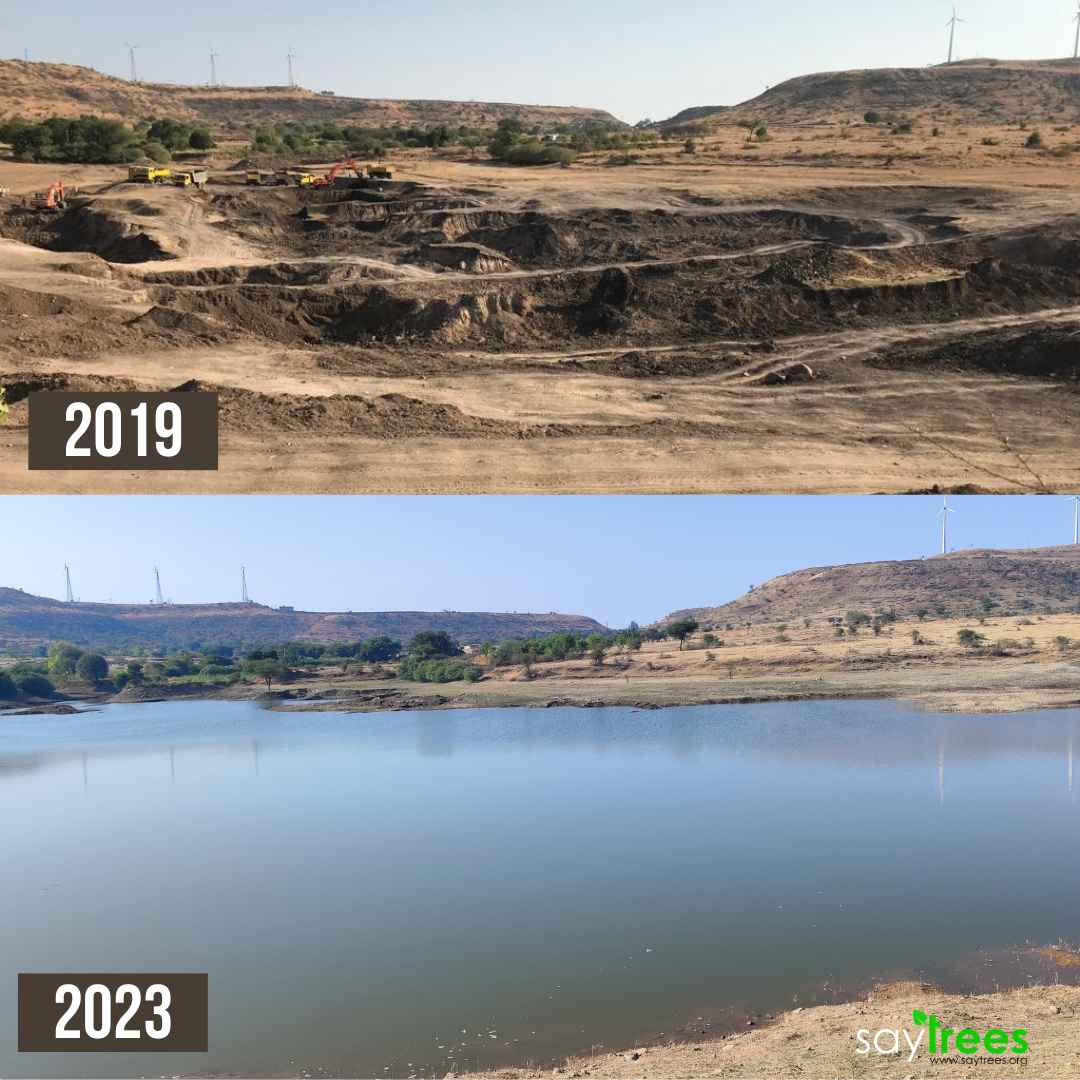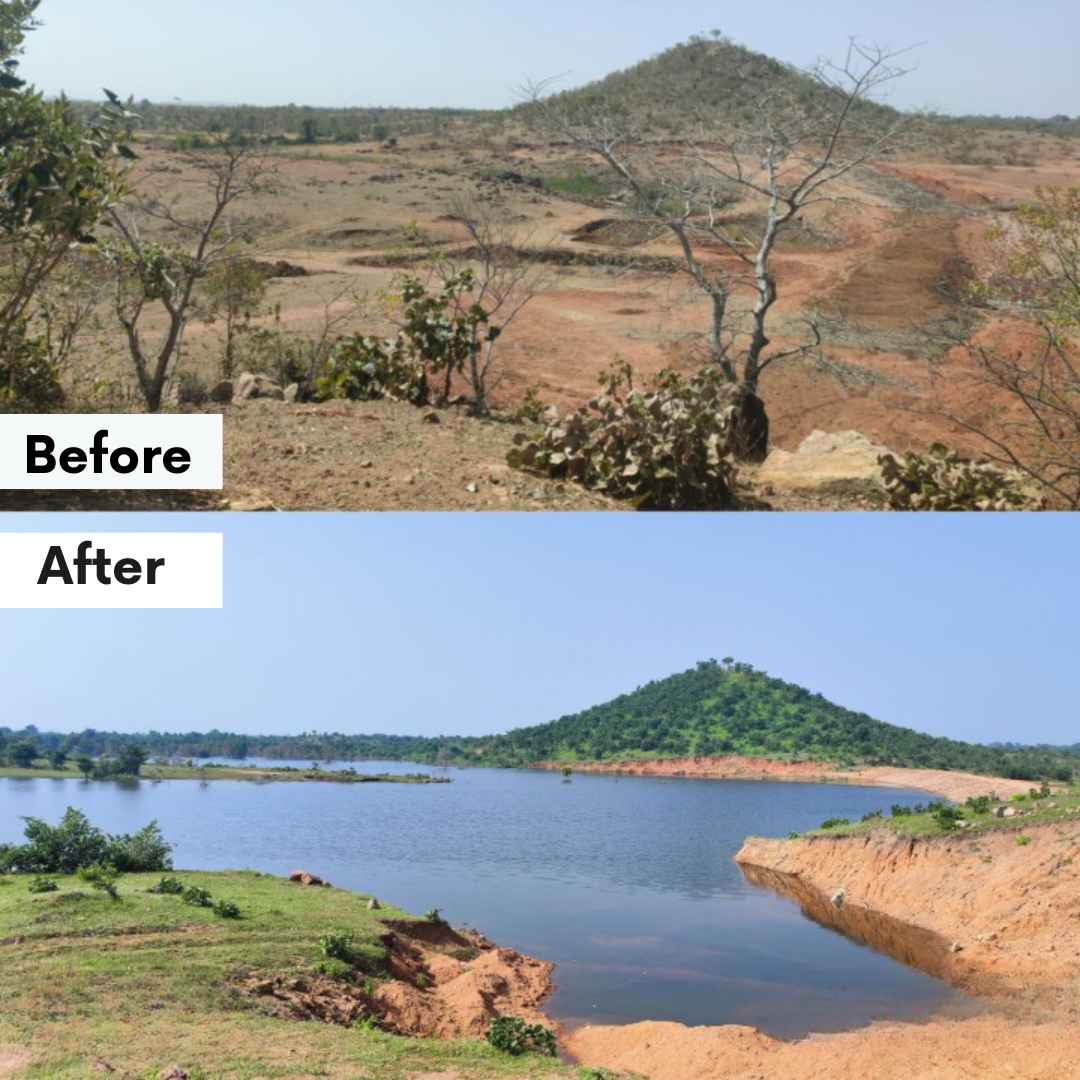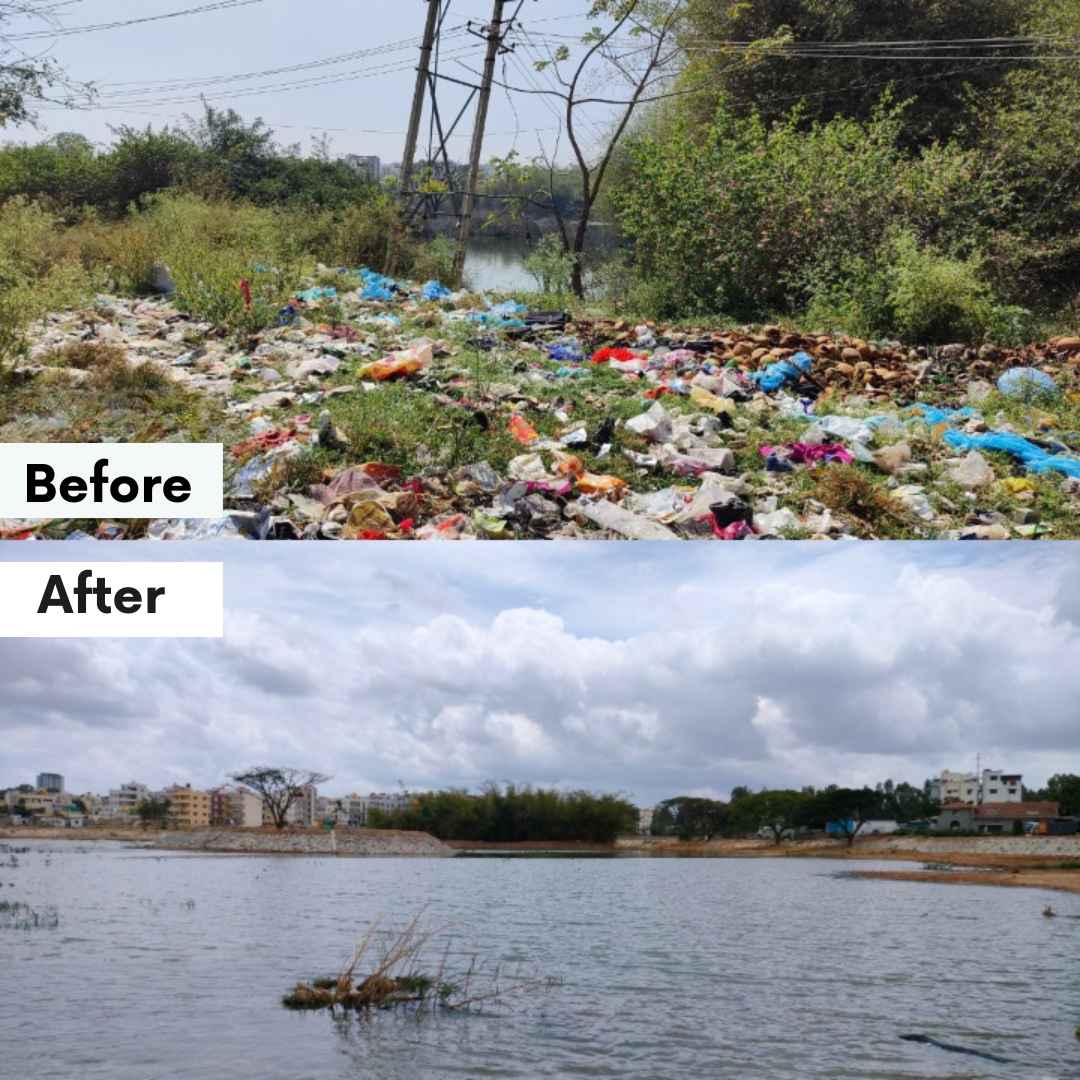This article has been sponsored by SayTrees
With temperatures soaring to 41.8 degrees Celsius, Bengaluru broke all its previous records this year, making it one of the hottest years in the last five decades. This was not the Bengaluru that Kapil Sharma treasures in his heart. Originally from Raipur, Chhattisgarh, Kapil first came to the city in 2001 for his engineering studies and immediately fell in love with its beauty and greenery.
“Back home in Raipur, we would spend our days filling water in the air coolers to combat the scorching heat. But Bengaluru was different back then. I remember coming to take an entrance exam at a school where the exam centre had no fans. It was strange for me to see a place without fans. While it would be 45 degrees in Raipur, it would rain in Bengaluru. It rained almost every day throughout the year,” Kapil recalls during a conversation with The Better India.

“Fast forward to 2024, people are now using air conditioners in Bengaluru, which never had such harsh summers before,” he adds with a sigh.
Taking this up as his responsibility, Kapil started ‘SayTrees’ — a non-profit organisation dedicated to creating urban and rural forests, and rejuvenating lakes with support from corporations and the community. So far, the non-profit has planted 3.8 million trees across the country and rejuvenated six lakes in Bengaluru and Pune.
We sat down with the founder to learn how he has achieved this feat through community engagement.
To revive Bengaluru to its initial glory
Talking in detail about his motivation to start SayTrees, the software engineer says, “When I moved to Bengaluru, roads were covered with giant trees. The cover was so dense that one could not see the sun. One day when I was travelling from home to office, I was as usual looking at the tall trees on the roads. The other morning, I saw that all those trees were gone. It was disheartening for me as I valued them so much,” he says.
“Many trees were being chopped down for road widening and metro construction. Although the Government was transplanting them, I felt responsible as a citizen. Otherwise, Bengaluru would become like any other Indian city. I didn’t want to regret later that I could have done something,” he adds.
Kapil began visiting government offices to understand his role and capacity as a citizen. In 2007, he started planting saplings on weekends. Every year, more and more people began joining him, and that’s how SayTrees was born.

What started as a weekend initiative has now grown into an active group of 100 people who conduct afforestation drives across the country with community engagement. “I felt it was important that people come and join this movement to make this initiative sustainable,” he adds.
A decade after its launch, the organisation began working on water conservation as well. “Any sapling needs support for two to three years, including regular watering. However, we noticed that after planting saplings during the monsoon, it became challenging to find water to sustain them in the summer. While working on our plantation projects, we realised that water conservation also needs support,” he adds.
Rejuvenating the once ‘City of Lakes’
Once aptly known as the ‘City of Lakes’, Bengaluru boasted a large number of lakes during the reign of the kings and the British. Satellite data collected by the Bangalore Metropolitan Region Development Authority (BMRDA) in 2001 revealed that there were 2,789 lakes in the city. Over time, many of these lake areas were transformed into residential and commercial entities, educational institutes, bus stands, stadiums, and dumping grounds.
“In Bengaluru, the lakes are drying up owing to climate change and uncontrolled development in the city. With more population concentration, resources are being utilised fast and the city is turning into a concrete jungle,” he says.
In 2017, SayTrees began focusing on water conservation in addition to tree planting. To date, the organisation has rejuvenated 40 wells and six lakes in Bengaluru and Pune.
Kapil credits his three P’s formula — project, people, and paisa (money) — for their success in achieving this feat. “Finding the right project, the right people, and the right corporate partners for funding support is crucial. I involve communities who are equally passionate about these initiatives to ensure the project’s success and sustainability,” he adds.
Recently, they rejuvenated Choodasandra lake, which spans 23 acres in the city. Talking about its before and after conditions, Kapil shares, “This lake was filled with sewage and waste. It took us a year to clean it. We have created a grazing land, a green patch for birds, and a walking track for the community. Now, both people and biodiversity can enjoy peaceful evenings near the lake,” he adds.
Kapil says it cost the organisation Rs 4 crore to complete this project. “It is an expensive affair that can only be achieved through corporate support. We make sure to involve the community to ensure the sustainability of the rejuvenation efforts. The community acts as additional hands and eyes for us, because while rejuvenation is easier, maintaining the lake is challenging,” he says.
“We have diverted some of the incoming sewage and kept the rest to ensure a steady flow of water into the lake. To achieve this, we created sedimentation ponds and wetlands that filter the incoming water before it reaches the lake. Rains are only seasonal, so maintaining a consistent water flow is crucial,” he adds.

Talking about the steps involved in the lake rejuvenation drives, he explains that first, they identify the lakes that need urgent rejuvenation. Secondly, they prepare a detailed project report (DPR), which includes information on the surrounding areas, topography, ecology, funds, and everything that needs to be done to benefit the community and biodiversity. Thirdly, they obtain approval from the government authorities. Finally, they proceed with the restoration work.
According to Kapil, rejuvenating polluted lakes helps with groundwater recharge and builds resilience against urban flooding during the monsoon. “A large lake can store up to 200 million litres of water every monsoon. Imagine gallons of rainwater flowing down the drain and flooding the city. Lakes have the capacity to capture that rainwater, which can then support the city during the summer,” he adds.
Kapil aims to restore 15 more lakes in Bengaluru, Pune, Chennai, and Hyderabad before the next monsoon.
Sitting miles away from India in the US, he shares, “I have been in the US since 2015, but this hasn’t affected the organisation; in fact, it has only grown since then. Although I don’t visit home often — which makes my parents angry! — I ensure to return to India once every year to monitor the work.”
“But we cannot do this work alone. Bengaluru alone has 200 lakes. If we rejuvenate 10 each year, it will take us 20 more years. I’m not sure if I have that much time. People can join hands with us so that together we can rejuvenate more and more lakes and be responsible citizens,” he says.
Volunteer with SayTrees to make a difference and build a sustainable future for all.
(Edited by Pranita Bhat; All photos: SayTrees)